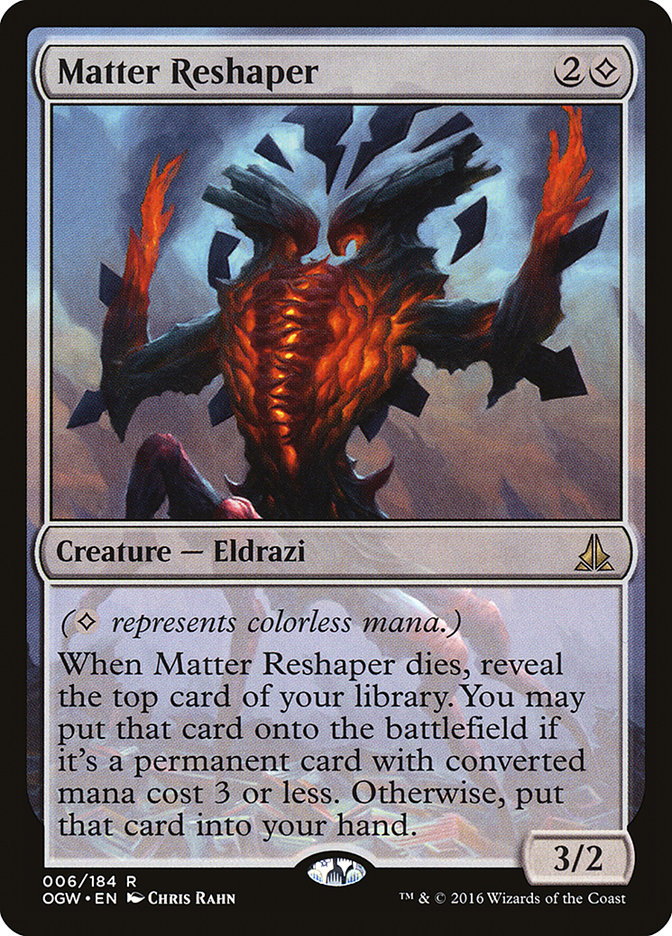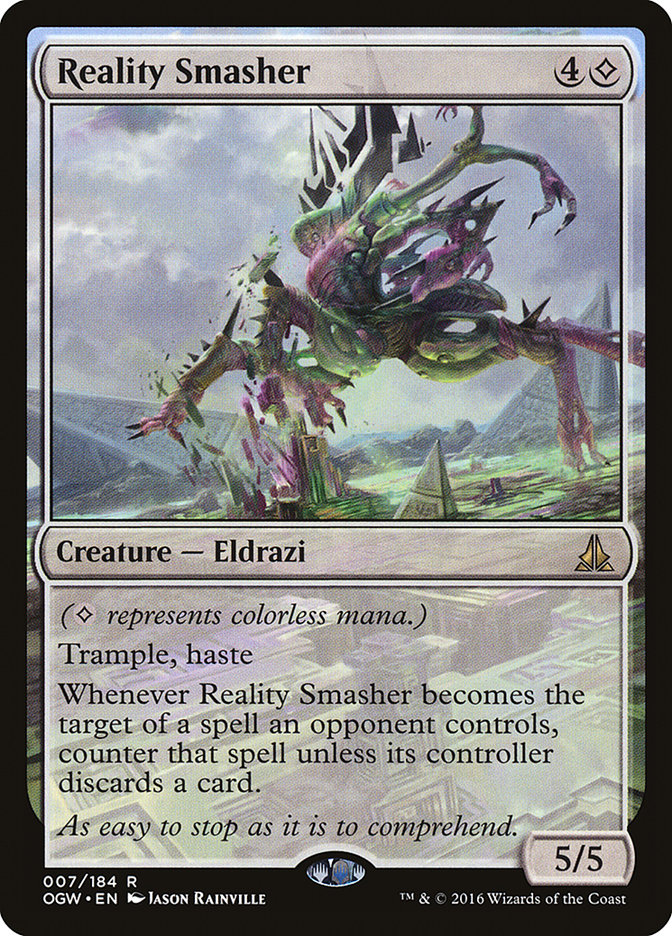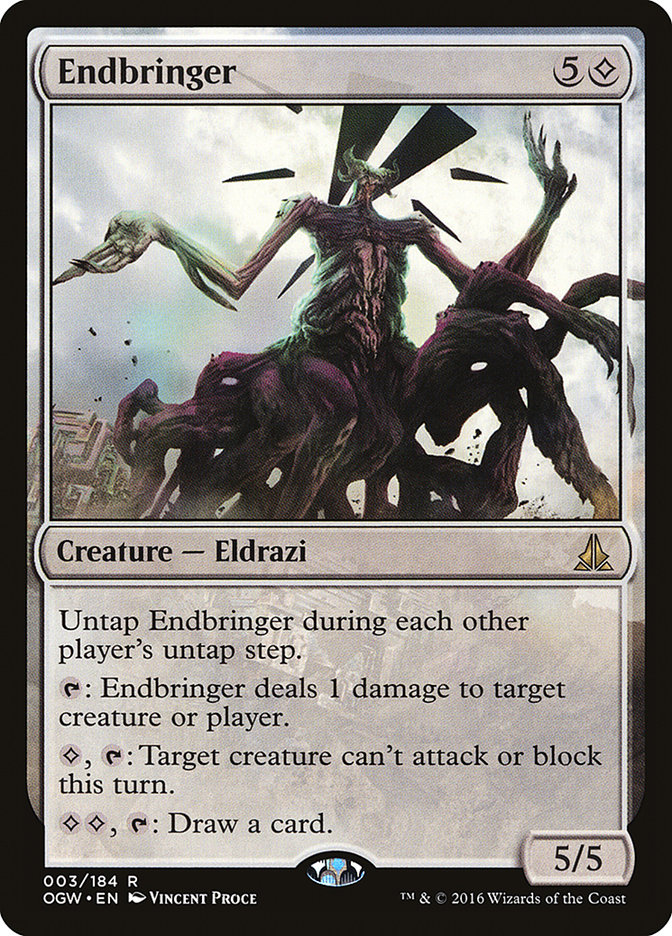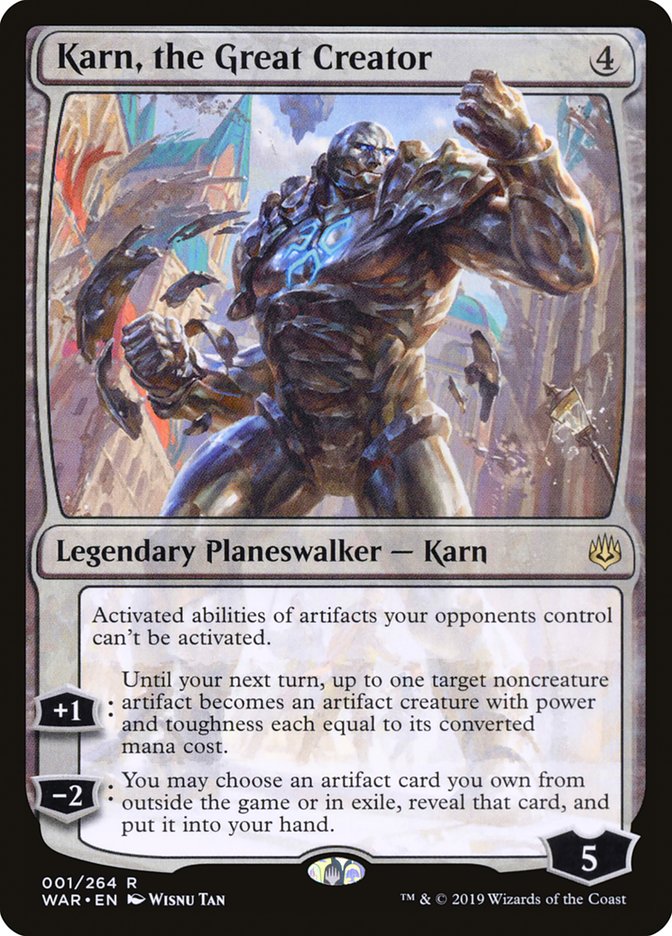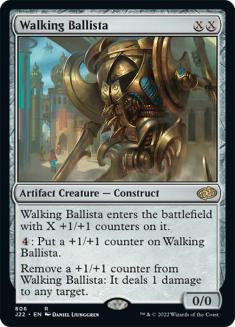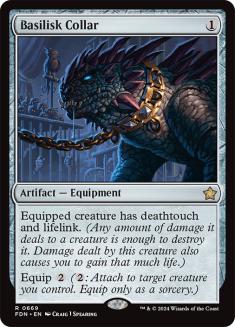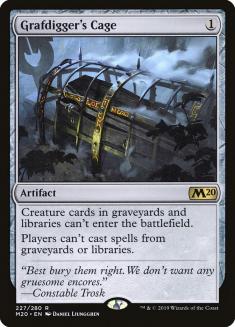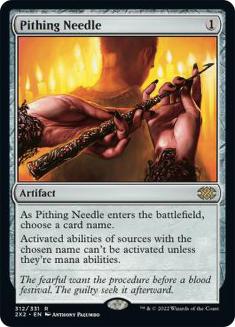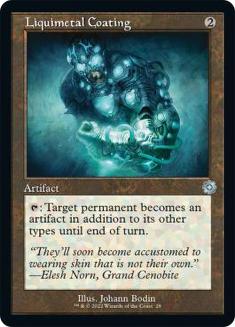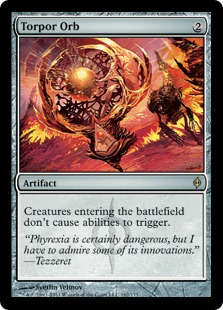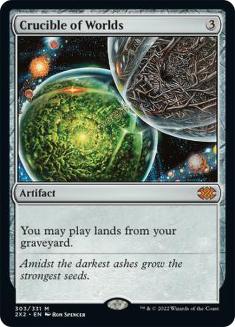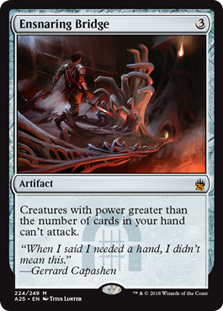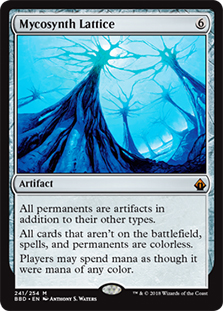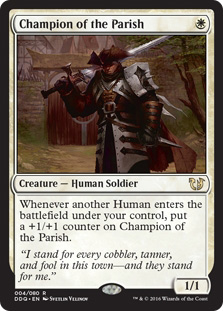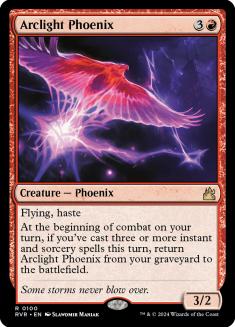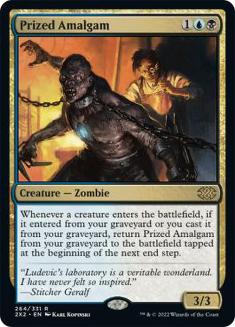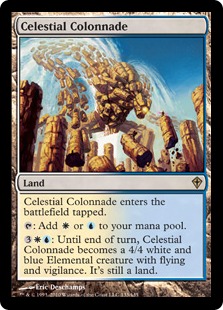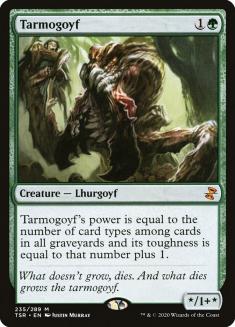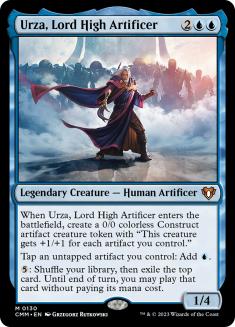With SCG Philadelphia in the books, it’s time to look to the Modern Open in Columbus this coming weekend. It’s a busy month of July for the SCG Tour, and there’s no time to rest, especially with such a volatile format as Modern ready to gobble up unprepared players.
I’ve spoken at length in many of my recent articles about how unsettled Modern has been for the last couple of months. This is in no small part to the massive influx of new sets, and the cards that accompany them, changing the landscape of the format in significant ways. As such, this has given rise to strategies both new and old, including one titan of Modern circa 2017 or so. While I believe a part of its success was due to the now-nerfed Hogaak deck, a powerful new engine has given the deck greater life.
Today, I’m here to talk about the new and improved Eldrazi Tron!
Creatures (15)
Planeswalkers (6)
Lands (24)
Spells (15)

The powerful Eldrazi creature core of Matter Reshaper, Thought-Knot Seer, and Reality Smasher hasn’t seen much love in Modern after the numerous power spikes Modern has gone through. The last time Eldrazi Tron was hanging with the top tier, Grixis Death’s Shadow held the crown as the best deck in Modern, and we were still some time away before Humans was even an established deck. At the time, comparatively, what Eldrazi Tron was trying to set up to win games was good enough. Let’s examine a list from Dan Musser, now a member of the Play Design team at Wizards of the Coast, that took down the Syracuse Modern Open a little under two years ago:
Creatures (20)
- 1 Wurmcoil Engine
- 1 Ulamog, the Ceaseless Hunger
- 2 Endbringer
- 4 Reality Smasher
- 4 Thought-Knot Seer
- 4 Matter Reshaper
- 4 Walking Ballista
Planeswalkers (2)
Lands (24)
Spells (14)

Eldrazi Tron is split into two separate engines. One engine is a beatdown plan involving powering out quick Reality Smashers, Thought-Knot Seers, Endbringers, and Matter Reshapers to put pressure on the battlefield. The other engine involves hitting Tron as soon as possible and playing a powerful high-mana-cost spell like a large Walking Ballista or Karn Liberated.
Looking to Miles Wilson’s list, this core of powerful colorless threats has stuck around through the last couple of years. The rest of the deck, however, is where we see the biggest change. Previously, the disparity between the more midrange-style gameplan of efficient Eldrazi beatsticks and huge Mono-Green-Tron-level threats like Ulamog, the Ceaseless Hunger and Karn Liberated often gave the deck really clunky draws. Thankfully, this has changed with the most recent iteration deck, for a multitude of reasons. Let us start with the most obvious:
Karn, the Great Creator was an absolute slam-dunk inclusion for the Eldrazi Tron archetype. First and foremost, it slots in to that alternate-win-condition slot outside of the Eldrazi creature package well by being a similarly costed threat on its own. Previously, when you played against Eldrazi Tron, you knew that if your opponent had access to six or seven mana, the worst they could do was drop a Reality Smasher or a stray All Is Dust on you. Now seven mana presents the possibility of a play like casting Karn, fetching an Ensnaring Bridge from the sideboard, and locking you out of being able to attack again.
The Karn tutor package is pretty well known at this point, but it is important to reinforce just how important this package is for Eldrazi Tron. Again, the previous plans for Eldrazi Tron were extremely one-dimensional: you had your Eldrazi aggro plan and you had your bad Mono-Green Tron impression plan. Now the deck has the Eldrazi aggro plan on top of having access to a jack-of-all-trades planeswalker in Karn that can prevent you from playing the game when you least expect it.
For example, as an avid Humans pilot, I used to love my matchup against Eldrazi Tron, as a combination of Reflector Mage to bounce the Eldrazi and Meddling Mage naming All Is Dust to prevent getting my battlefield swept away was almost always more than good enough. Having to also contend with Ensnaring Bridge in Game 1s, Karn turning off Aether Vial, and even a stray Torpor Orb adds a whole new angle that is sometimes hard to contend with all at once.
Eldrazi Tron getting access to a planeswalker that possesses both a toolbox and an instant win condition via Mycosynth Lattice is exactly what this deck needed. Let’s be honest: if your Modern deck can’t cheese wins in 2019, you’re doing yourself a massive disservice. The best way that Eldrazi Tron could “steal” wins in 2017 Modern was casting Thought-Knot Seer and Reality Smasher far ahead of schedule via a double Eldrazi Temple draw or Chalice of the Void locking the opponent out from playing the game. That was probably good enough back then, but certainly not now.
Karn is certainly the number one reason Eldrazi Tron has seen a renaissance as of late, but it’s important to talk about the other big reason this deck got a boost: the London mulligan. There is less to discuss fundamentally on why this matters compared to the impact Karn, the Great Creator has, yet it is no less important. A good friend of mine, young up-and-comer Joseph Horton, had his first taste of success at the Open level a year and a half ago at the last Roanoke Modern Open in December 2017:
Creatures (20)
- 1 Wurmcoil Engine
- 1 Ulamog, the Ceaseless Hunger
- 2 Endbringer
- 4 Reality Smasher
- 4 Thought-Knot Seer
- 4 Matter Reshaper
- 4 Walking Ballista
Planeswalkers (2)
Lands (24)
Spells (14)

I also played Eldrazi Tron that weekend, making it to the second day of that Invitational. One anecdote from that weekend that pertains to Horton from above: as I was watching him rack up wins nine, ten, eleven, twelve, and thirteen, I vividly recall him mentioning how frequently he would mulligan to six-, five-, or even four-card hands and very easily win anyway, even witnessing it myself on a handful of occasions.
As I previously mentioned, Eldrazi Tron really only had access to one type of draw that was able to overpower opponents quickly, and this usually involved a hand full of Eldrazi Temples and Eldrazi that could get powered out way ahead of schedule. The deck had such a large delta between its highest-powered and lower-powered hands that it was more important than for many other decks in the format to be disciplined in what you kept versus what you shipped back.
Mulliganing aggressively to these types of hands was how you could find these hands more efficiently, but it came at a cost, as you would have to give up on this endeavor and settle for more functional hands as you approached five or six cards. Now, with the London mulligan, getting to look at the full seven-card hand and sculpt it the way you want it to gives Eldrazi Tron a nice boost in consistency when it comes to employing an aggressive mulliganing strategy with this deck.
Tying everything together, Eldrazi Tron now has:
- A higher floor and a higher ceiling in terms of average power level of hands, thanks to Karn, the Great Creator.
- An improved mulligan rule that benefits a deck such as Eldrazi Tron in that it helps you search for those higher-powered hands more easily.
Now that the fundamentals on Eldrazi Tron have been covered, a larger question needs to be asked: How does the deck fare against the rest of the format?
Modern’s top tier can be summarized largely by the cards pictured above, as Humans, Izzet Phoenix, Dredge, Azorius Control, Jund, and Grixis Urza have been the decks putting up the best results as of late, outside of Eldrazi Tron itself.
I have spoken a lot to the previous iterations of Eldrazi Tron in this article, but once more I would like to bring up how before, one of the best ways to determine if Eldrazi Tron was well-positioned was how well Chalice of the Void was positioned in Modern:
Turning off a lot of the best ways to remove cards like Thought-Knot Seer and Reality Smasher (such as Path to Exile and Fatal Push), as well as Lightning Bolts, blue cantrips, and a whole slew of other efficient one-mana and two-mana spells in Modern is what Chalice of the Void does best. In Legacy, Chalice of the Void is the bane of most of the format if it resolves, since blue is the most powerful color and any deck playing the color usually features more than its fair share of Ponders, Brainstorms, and Preordains. Modern is a little bit swingier in how effective Chalice of the Void is, as there have been times where Chalice wasn’t good enough.
Things are a little bit different right now, as Chalice is obviously fantastic against what might be the best deck in Modern: Izzet Phoenix. Chalice cuts off a lot of what that deck is trying to accomplish, especially in the early turns, and the one-two punch of Chalice backed up by Thought-Knot Seer and Reality Smasher is an absolute nightmare for Thing in the Ice and friends. Chalice was even fantastic against Hogaak in its previous iterations, and many are still trying to make that deck work. Cutting off most of their creature spells and Faithless Looting makes it very difficult for the deck to be able to muster any sort of battlefield before getting trampled over by an army of noodle monsters.
Speaking to the rest of the decks I listed above, the new and improved Eldrazi Tron has plugged a lot of holes in matchups that were previously challenging.
- I already spoke some to how Karn gives the Humans matchup a much better chance than before, causing the Humans pilot to have to contend with more than just the Eldrazi creatures and occasional sweeper. Karn can shut the door on Humans incredibly quickly with Torpor Orb or Ensnaring Bridge, especially in Game 1, where Deputy of Detention is typically played in small numbers, if at all.
- Azorius Control likely struggles with getting Karn off the table in a reasonable timeframe should it resolve and can be very soft to getting combo-killed with Mycosynth Lattice or the slow burn of Liquimetal Coating destroying their lands over a long game.
- Dredge has historically had a difficult matchup against Eldrazi Tron already, but the consistent four-of Leyline of the Voids found in the sideboard these days make that matchup even worse for Dredge.
- Grixis Urza and Jund are likely the closest matchups of the bunch, but considering how devastating a resolved Karn is against Grixis Urza and how unfairly the deck can play against Jund thanks to being a Tron deck, I imagine these matchups are more winnable than not.
Eldrazi Tron was born from a desire to prey on a specific metagame. While it experienced reasonable success during the times of Grixis Death’s Shadow, it faded into obscurity as Modern got more and more powerful over the last couple of years. Now that the deck has powered up immensely on its own, it doesn’t need to prey on a specific metagame. Rather, thanks to some new additions from recent sets and a timely change to how we mulligan, Eldrazi Tron looks to be a consistent force in Modern moving forward.


